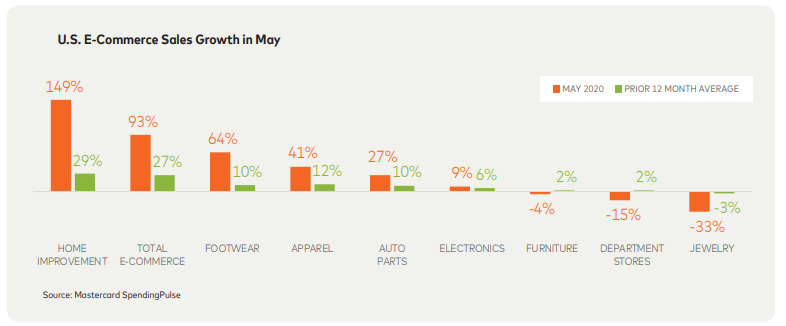The COVID-19 pandemic has had an enormous impact on the retail landscape. It has led retailers to accelerate their efforts towards digitizing their businesses and improving their eCommerce channels.
Undoubtedly, one of the main spurs behind this push has been consumers’ widespread adoption of online shopping that has led to a massive spike in eCommerce sales and home deliveries.
While initially shipping carriers weren’t prepared for a volume surge at this time of the year, they have come to terms with the situation.
Major carriers set up temporary fulfillment hubs and took preventive measures like contactless and signatureless deliveries to protect both customers and their employees from getting infected.
With the understanding that COVID-19 is here to stay, most businesses have come to terms with the new normal.
Under these conditions, here’s what you should know about shipping orders to your customers:
1. Additional surcharges mean higher shipping costs
U.S. eCommerce sales made up roughly 11% of total retail sales in 2019. That number jumped up to 22% of all retail sales in April and May of 2020.

Shipping carriers, in-order to cope with the spike in demand and the complexities of delivering parcels, added surcharges, thus increasing shipping costs.
FedEx added 30 cents to parcels delivered to homes. This surcharge is applicable to retailers who ship at least 40,000 packages a week and whose volume is higher or more than their average in February 2020. Oversized items will also include an additional fee.
UPS added 30 cents per package as surcharge for retailers who exceeded their average February weekly volume by 25,000. An additional surcharge is also levied for oversized packages shipped by businesses that ship more than 500 packages a week.
Similarly, DHL added a variable surcharge to all its Time Definite International shipments for packages between 2.5 kg and 300 kg.
Such surcharges from shipping carriers during the holiday season are not unusual but having them levied in the first half of the year presents a challenge.
However, since shipping carriers have canceled money-back guarantees only on late deliveries, you can still claim refunds for incorrect surcharges and 49+ other service failures.
2. Expect an increase in delivery delays due to shipping carrier impacts
During the pandemic, shipping carrier operations have taken a hit due to the surge in parcel volumes, especially home deliveries, and staffing shortages. As a result of this, there has been an increase in delivery delays.
Some parcels have been delayed for days and even weeks, leading to frustrated customers calling out shipping carriers on the internet.

Without a doubt, major shipping carriers like FedEx, UPS, and USPS have delivered a relatively lower number of packages on-time in recent months.
As of April 14, FedEx delivered 81.7% of its parcels on-time, UPS 86.0% of its parcels, and USPS 89.3% of its parcels.
Experts opine that this trend will likely continue in upcoming months as more consumers turn to online shopping, increasing the number of home deliveries, to get essential products while sheltering at home. So be prepared for delays with your shipments.
While you cannot control the delivery speed of your shipping carriers, you can always keep a tight grip on order processing and handling times to ensure that your packages reach as early as possible.
3. Delivery uncertainties mean a spike in delivery-related customer queries
Searches for “customer service” have been higher during the lockdown than during the last holiday season.

Also, businesses have been seeing a surge in customer queries, as customers are anxious and frustrated due to the uncertainties around deliveries.
Initially, customer support agents had limited visibility into order deliveries since updates on packages were sometimes not available or because some packages were not getting scanned or were being sent back without notifications.
But as restrictions were removed and businesses started opening up, the volume of queries dropped. On average, global weekly tickets in mid-May were down nearly 5% from their peak.

This trend didn’t last long though and the volume of tickets rose in early June, before dropping again in the middle of the same month.
With the pandemic evolving and uncertainties during deliveries still a major problem, keeping your customer support representatives on top of every issue is critical. More on that later.
4. Customers seek transparency & proactive communication on their orders
Transparency has never been more critical than now, during the pandemic. Though customers have been giving retailers some leeway with all the delays and delivery uncertainties, they expect more transparency and pro-activity.
They expect brands to communicate about delivery delays in time. They do not appreciate being left in the dark.

Many brands have put out messages on their sites, informing customers to be prepared for possible delivery delays and giving them a variable delivery time.

With the present conditions set to continue for a while, it’s in your business’s best interest to overcommunicate with customers rather than the other way round.
Here’s what you can do to navigate ‘shipping and delivery’ challenges and control shipping costs
Though costs are spiraling, there is much you can do to make every dollar go farther for you and your business.
1. Offer access-point deliveries
Access point deliveries are generally cheaper than home deliveries. Access points are usually situated near the point of delivery, where recipients can come and pick up their parcels.
In the USA, major carriers like FedEx, UPS, and USPS have over 100,000 staffed or automated access points, usually retail stores.
Apart from stores, access points can also include:
• Dropboxes
• Mailboxes
• Carrier shipping centers
• Full-service, carrier-authorized outlets
• Parcel lockers
• Third-party retail stores
You can also offer alternative delivery locations, which will be convenient and accessible to your customers.
2. Offer Curbside Deliveries
If you own an offline store, then offering a curbside delivery could be a win-win situation for both you and your customers.
From a shopper’s perspective, it is quick and convenient, and for you, it will help save on shipping costs.
While until the pandemic, only mass retailers offered buy online, pick up in-store services (BOPIS), after the pandemic hit, more and more independent retailers have started offering such services. These have received good adoption by customers. Many experts believe that this trend will stay on even after this pandemic ends.
One drawback of curbside deliveries is that offline retailers will lose the discovery aspect of shopping, wherein a shopper comes into a store and discovers and buys a product.
However, since pandemic-spurred rate increases are still in effect, this approach will help you control your shipping costs.
3. Claim refunds for over 50 service failures and billing errors including incorrect surcharges
Shipping carriers have temporarily suspended money-back guarantees for late deliveries. However, there are 50+ service errors like incorrect surcharges, misbilled packages, duplicate invoices, etc. which are still eligible for refunds.
Since porch piracy is a huge problem nowadays, you can also claim refunds for lost packages.
By auditing your shipments and claiming refunds, you can save up to 20% of your shipping spend.
4. Proactively communicate about delivery issues before customer impact
Earlier, we mentioned about the value customers place on being informed of possible delays in advance.
Since it’s a well-established fact that the delay rate is still high, you could put up a message on your website informing customers of the fact and providing them a general revised timeline.
A better alternative is to use a service that proactively notifies about packages that are likely to be delayed.
This will give you ample time to inform your customers about the delays.
This is a great way for your business to demonstrate to each of your customers that they are valued, thereby reducing the possibility of them switching over to a competitor for lack of service.

The best part is you can automate this process, while you focus on core business functions.
5. Equip your Support Representatives with Essential Tools
Times like these present a significant challenge to your support reps as many of them are working remotely and might not have the required infrastructure to deal with customer queries.
Equipping them with a tool that provides critical delivery-related information across carriers on a unified dashboard can ease their workflow, thereby helping them provide better customer experience.
Even better if the tool allows access to parcel information both broad and granular negating the need to juggle between multiple tools.

6. Offer customers a self-serve tracking page
Provide a self-serve tracking page to customers, so they have quick access to their order delivery status, thereby reducing incoming tracking queries.
A branded tracking page can help improve brand perception and allows you to re-engage with customers and cross-sell and upsell to them.

A Little About LateShipment.com
LateShipment.com is the world’s only logistics cloud tool that helps businesses of every size reduce shipping costs by up to 20% and provide memorable delivery experiences to customers at scale.
LateShipment.com is value-packed with great features to supercharge your post-purchase processes:
- Save up to 20% on Shipping – Automatically audit your shipping carriers’ invoices and recover refunds for 50+ service failures & billing errors including late deliveries.
- Real-Time Visibility – Monitor your outbound & inbound shipments across multiple shipping carriers on a centralized window, in real-time.
- Critical Delivery Alerts – Pay attention to daily deliveries with predictive delay alerts and more on a purpose-built dashboard for support reps.
- Proactive Issue Resolution – Proactively communicate with customers to prevent them from having bad experiences due to delivery failures.
- Custom Delivery Notifications – Send custom or automated delivery status notifications for events like “shipped,” “attempted,” & “delivered.”
- Branded Tracking Pages – Build fully-customizable order tracking pages for your customers to improve brand recall and sales.
The best part is, it takes less than 2 minutes to see LateShipment.com in action, so sign up now!
![[COVID-19] All you need to know about eCommerce Parcel Shipping During the Pandemic](https://lswordpress.s3.amazonaws.com/blog/wp-content/uploads/2020/07/24101402/blog-header-6-1.png)






